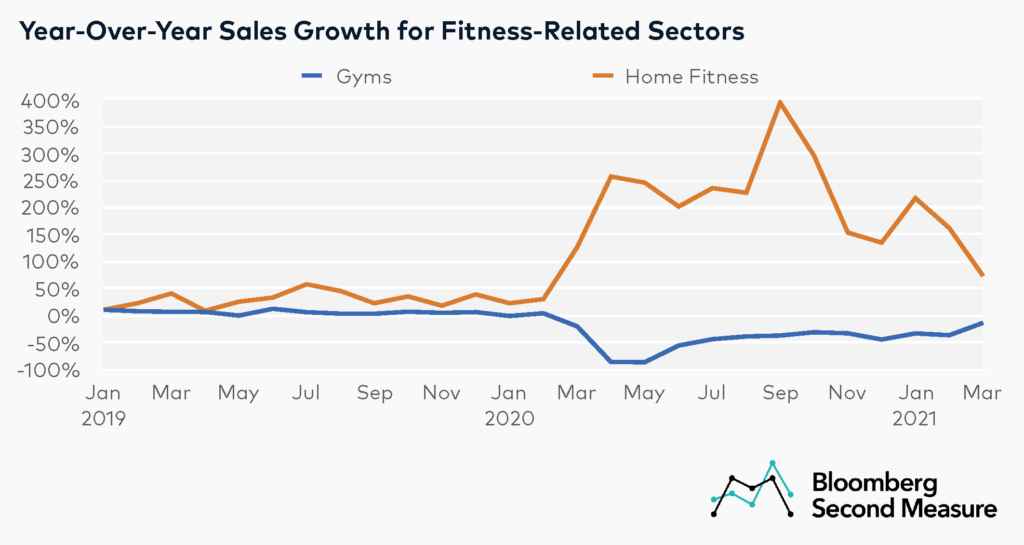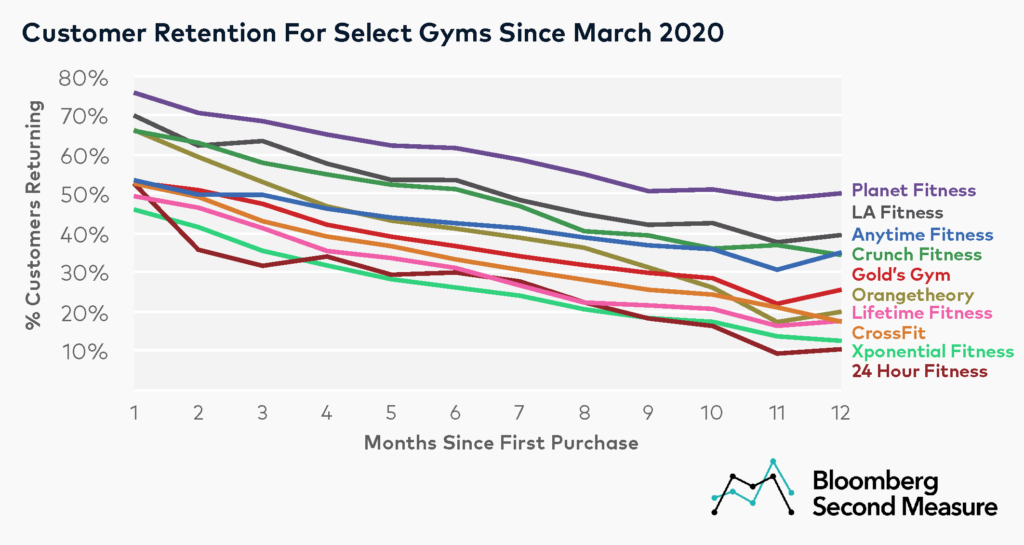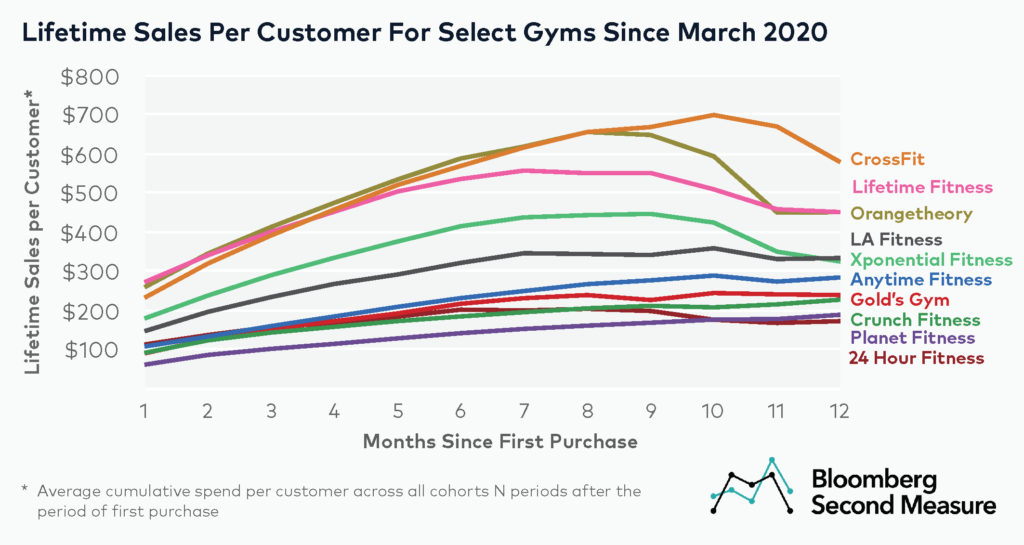NOTE: Bloomberg Second Measure launched a new and exclusive transaction dataset in July 2022. Our data continues to be broadly representative of U.S. consumers. As a result of this panel change, however, we recommend using only the latest posts in assessing metrics, and do not support referring to historical blog posts to infer period-over-period comparisons.
Fitness centers and gyms in many states are reopening as vaccination rates continue to increase. However, while gym facilities were closed early in the pandemic, many people turned to home fitness companies for workout equipment. Sales growth skyrocketed for home fitness brands over the past year, and one emerging player in the industry, Mirror, was recently acquired by Lululemon. Transaction data reveals how gyms have fared over the past year compared to home fitness companies, and how customer retention varies among some of the largest fitness chains.
Even before the COVID-19 era, home fitness companies were on the rise. In 2019, sales at gyms and fitness centers had an average monthly growth rate of 6 percent year-over-year, compared to 30 percent year-over-year for home fitness companies. In 2020, gym chain sales declined 39 percent year-over-year on average each month, while home fitness companies grew an average of 194 percent year-over-year.

Early in the pandemic, most gyms were forced to close due to shelter-in-place orders. As a result, gym sales experienced an average year-over-year decline of 86 percent in April and May 2020. Gyms have been gradually recovering since June 2020, when many were able to resume operations at limited capacity.
Conversely, home fitness sales have soared in the pandemic, reaching 257 percent sales growth year-over-year in April and remaining elevated through the summer. By September 2020, home fitness companies’ sales were nearly four times greater than the previous year. Although home fitness growth decelerated at the end of 2020, sales were still up 73 percent year-over-year in March 2021.
Planet Fitness has highest customer retention, while CrossFit has highest lifetime sales per customer
Despite the disruptions caused by COVID-19, many of the largest fitness chains saw solid customer retention rates. Among customers who started their Planet Fitness membership in March 2020, 50 percent maintained it 12 months later. By contrast, 24 Hour Fitness had the lowest customer retention; 10 percent of customers who made their initial purchase in March 2020 made a repeat purchase 12 months later.

Across the chosen competitive set of gyms and fitness companies in our analysis, the average lifetime sales per customer between March 2020 and March 2021 was $326. At a more granular level, 24 Hour Fitness and Planet Fitness had the lowest average lifetime sales per customer in this time frame, with $173 and $189, respectively. CrossFit had the highest average lifetime sales per customer, with $579 after 12 months, followed by Orangetheory with $451. Bloomberg Second Measure observes revenue for CrossFit, Inc. and its affiliates.

*Note: Bloomberg Second Measure regularly refreshes its panel and methods in order to provide the highest quality data that is broadly representative of U.S. consumers. As a result, we may restate historical data, including our blog content.
